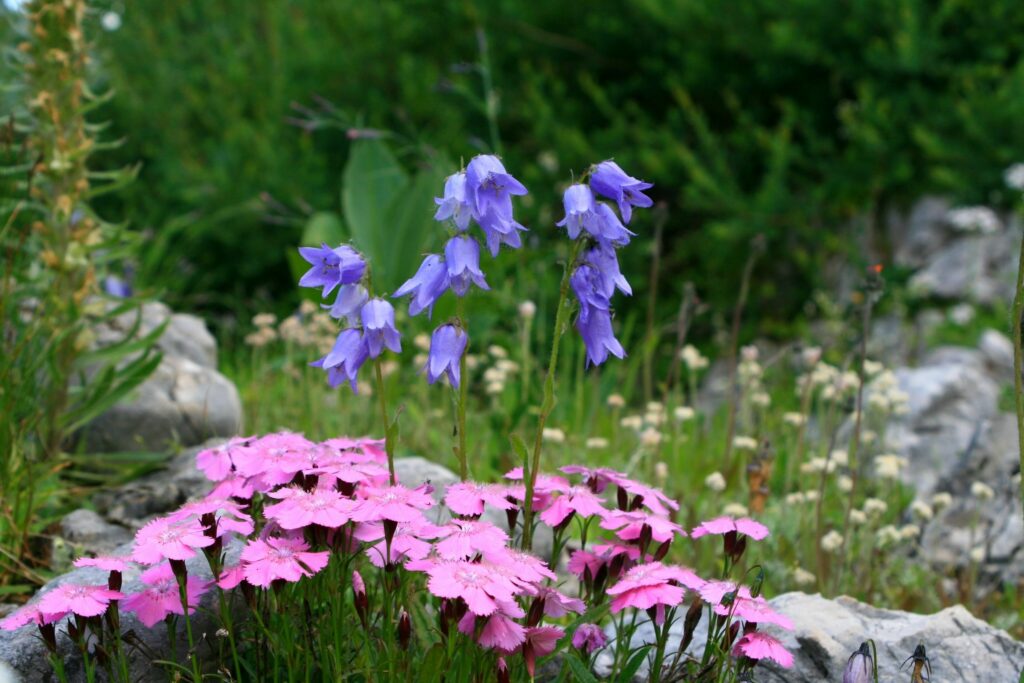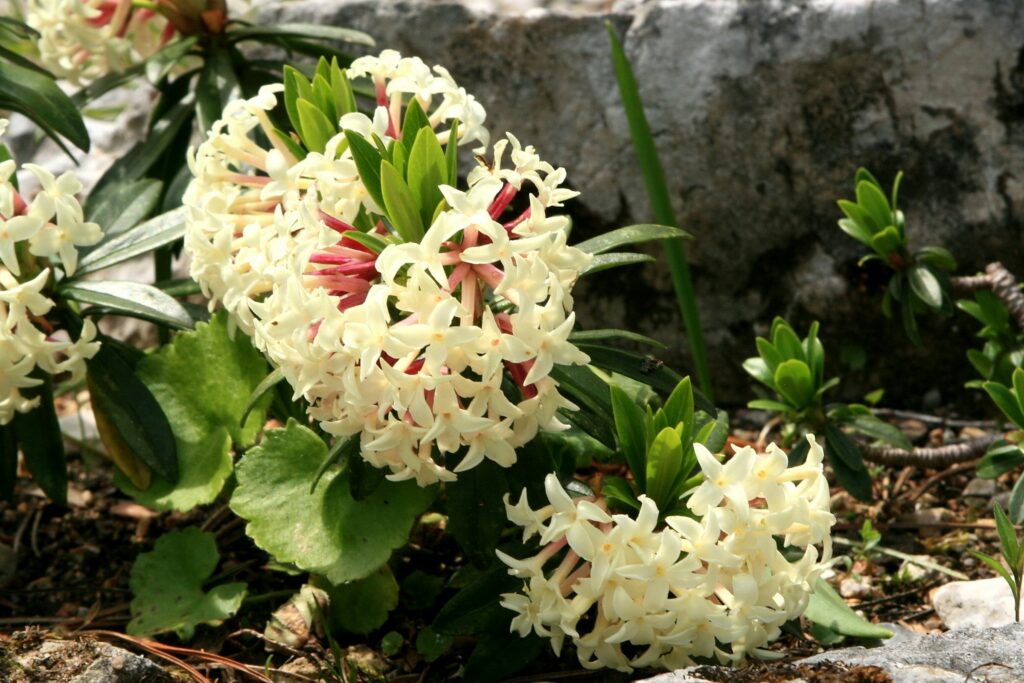About us
The Munich-Nymphenburg Botanical Garden, with an area of 21.2 hectares and over 350,000 visitors a year, is one of the most important botanical gardens in the world. Around 16,240 species and subspecies are cultivated here. The parts of the greenhouse complex accessible to visitors cover an area of around 4,500 m².
The Botanical Garden with its outstation, the Alpine Garden at Schachen (1,860 AMSL), is involved in national and international research projects to which it provides important material and observation data. The garden has also been involved in the training of apprentices in horticulture for many years. In addition, it serves the preservation of rare European plant and insect species.
Our areas
The Botanical Garden currently has about 100 employees. The garden is divided into 16 sections, each of which is under the supervision of a head gardener. These are trained masters with decades of experience, who in turn instruct gardeners, interns and apprentices.
| Greenhouse area | Management |
|---|---|
| Araceen, Bromelien und tropische Farne | Kaja Herzog |
| Gewächshausanzucht, Karnivoren, Begonien | Harald Loose |
| Kakteen und andere Sukkulenten | Franziska Berger |
| Kalthauspflanzen | Angelo Razeto |
| Gesnerien, Fuchsien und Passifloren | Alexandra Lis |
| Orchideen | Bert Klein |
| Palmenhaus, Cycadeen und tropische Nutzpflanzen | Tillmann Lohff |
| Tropische Wasserpflanzen | Andreas Richter |
| Outdoor area | Management |
|---|---|
| Alpine Anzucht und Alpengarten am Schachen | Jenny Wainwright-Klein |
| Alpinum | |
| Arboretum und Rhododendron-Hain | Andrea T. Tauscher |
| Nutzpflanzen | Rolf Brüggemann |
| Ökologisch-genetische Abteilung | Robert Kreutzer |
| Pflanzenanzucht für den Schmuckhof | Markus Schmölz |
| Schmuckhof | Brigitte Huber |
| Systematische Abteilung |
A team of gardeners assists with general upkeep of the green areas, hedges, pathways, and storage areas, helps set up and break down exhibits, and assists the precinct gardeners during peak work periods.
Gardening-technical area | Garages
The workshops of the Munich-Nymphenburg Botanic Garden look after the entire garden and the institute in terms of electricity, water, heating, air conditioning, lighting, sanitary facilities, repair of garden equipment and machinery, maintenance of existing technology and advice on new acquisitions.
The employees build, among other things, shelters, tool sheds, planting frames, plant trellises, shelves, bed borders, information signs, picture frames, office furniture, cabinets, tables and even complete kitchens, such as in the recreation room of the horticultural department. But also the benches and the large plant troughs come from the internal workshops. Other activities include laying water pipes in the greenhouses, converting fluorescent tubes to more effective LED lamps, and also sharpening garden shears. The workshop also looks after the entire locking system, which currently has over 400 locks. The glaziery glazes broken panes, windows, doors and herbarium cabinets. The mechanics also take care of the vehicle fleet, passenger transport and the transport of larger deliveries.
Science and research
A particular strength of the Munich Botanic Garden is that several scientists – Dr. Andreas Gröger, Dr. Simon Pfanzelt, Dr. Thibaud Messerschmid and Dr. Katharina Bohley – work at the garden and ensure the ongoing scientific documentation of the plant collection. Only if every species that grows with us is correctly named and documented, can we meet the needs of our own research, the requests of external scientists for plant material and the comprehensive information of our visitors.

Aster farreri 
Campanula barbata 
Daphne glomerata
State Natural Science Collections of Bavaria
The Botanical Garden Munich-Nymphenburg is part of the Staatliche Naturwissenschaftliche Sammlungen Bayerns/ State Natural Science Collections of Bavaria (SNSB); a non-university research and educational institution with six state natural history collections in the fields of zoology, botany, geology and paleontology, mineralogy, anthropology and paleoanatomy, as well as eight school collections.
Currently, the SNSB employs a total of more than 300 staff, of whom around 80 are scientists. In addition to building, maintaining and scientifically processing the collections, they perform valuable research and educational work in the field of biosciences and geosciences.
The collections of the SNSB comprise a total of over 31 million inventory units (animals, plants, fungi, fossils, rocks, etc.), with the SNSB having world significance in many collection areas (e.g. butterflies and beetles, flora of South America, Archaeopteryx and Solnhofen plate limestones, Neuschwanstein meteorite and Russian minerals). In addition to the scientific collections, numerous display exhibits are exhibited in the SNSB museums.
The SNSB’s research focuses on the origin, causes and effects of geo- and biodiversity in space and time. In today’s research landscape, only natural history collections are able to provide sufficiently comparable data on biodiversity both at different times and over the entire history of the Earth. The SNSB has an excellent infrastructure to document and interpret changes in the biosphere. Regional as well as supra-regional and globally oriented collections play an important role. Alpine systems represent a special model region.
Further information on the SNSB homepage.

